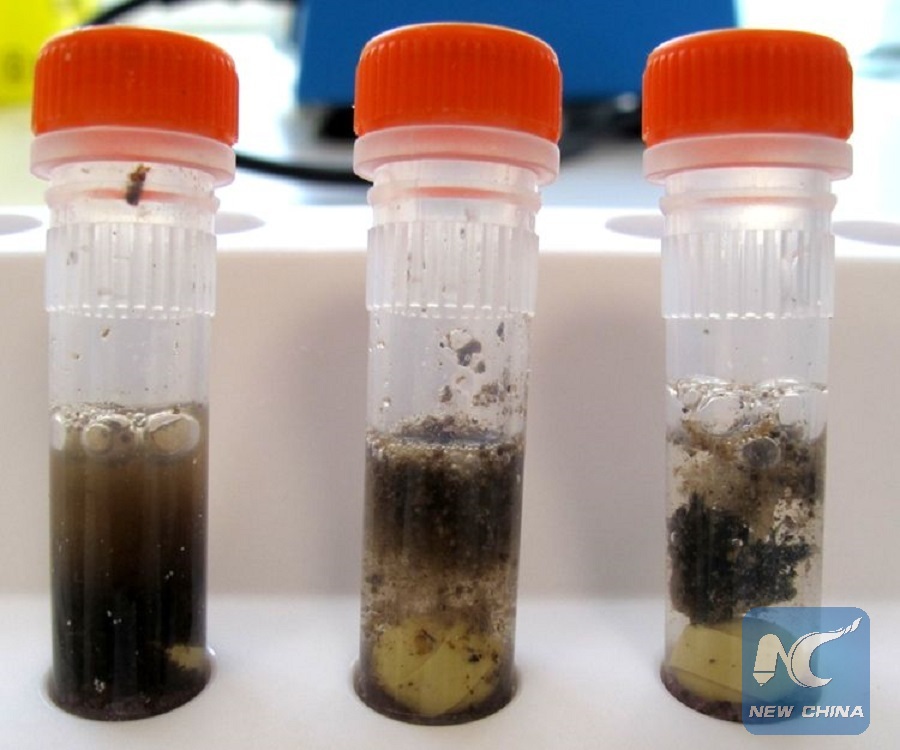
Photo shown is Otzi, the 5,300-year-old Iceman, found in the Italian Alps in 1991. (Xinhua/Eurac Research)
SYDNEY July 13 (Xinhua) -- Traces of fatty meat, einkorn grain, and toxic ferns have been identified in the stomach of Otzi, the 5,300-year-old Iceman by researchers, from Australia's University of technology Sydney (UTS) and the Eurac Institute for Mummy Studies (EIMS) in Italy.
Found in the Italian Alps in 1991 by German hikers, Otzi is the world's oldest naturally preserved mummy.
An international study released on Friday into Otzi's stomach contents has given researchers an in-depth look into the diet of ancient European humans going back 5,000 years to the Copper Age.
"We reconstructed the Iceman's last meal, showing that he has had a remarkably high proportion of fat in his diet, supplemented with wild meat from ibex and red deer, cereals from einkorn, and with traces of toxic bracken," EIMS researcher Frank Maixner said.
About half of the stomach contents were composed of fatty connective tissue, most likely from Alpine Ibex, a type of mountain goat.
"The meat was potentially smoked, the reason we think that is because it had soot particles on it, however the fibres on the meat itself were not consistent with cooking," Professor Philip Doble from UTS said.
Otzi was found with a bow and arrow and it is presumed that mountain dwellers like him would have hunted the Ibex as a good source of nourishment in the harsh alpine climate.
"The high and cold environment is particularly challenging for the human physiology and requires optimal nutrient supply to avoid rapid starvation and energy loss," Albert Zink from EIMS said.

EIMS researcher have identified fatty meat, einkorn grain, and toxic ferns in the stomach of Otzi, the world's oldest naturally preserved mummy. (Xinhua/Eurac Research)
The Iceman also consumed an ancient strain of wheat called einkorn, which was probably baked into bread, as well as spores from a toxic fern.
It is not known why he consumed the poisonous fern but scientists speculate that it may have been as a type of medicine or was possibly used to wrap other food for preservation and was accidentally consumed.
Initially researchers had trouble locating the stomach to test the contents, because it had inexplicably shifted upwards to where the lower part of the lungs should be.
However in 2009 during a CT scan the stomach was found and now, using classical microscopic and modern molecular approaches, detailed analysis can be done on the contents of Otzi's gut.
"It's a fascinating study because it allows us to look into the past from 5,300 years ago," Doble said.
"Some of the technologies that we've got available are quite remarkable in how far they can go back looking at trace evidence of what occurred, or in this case, what he ate all that time ago."

